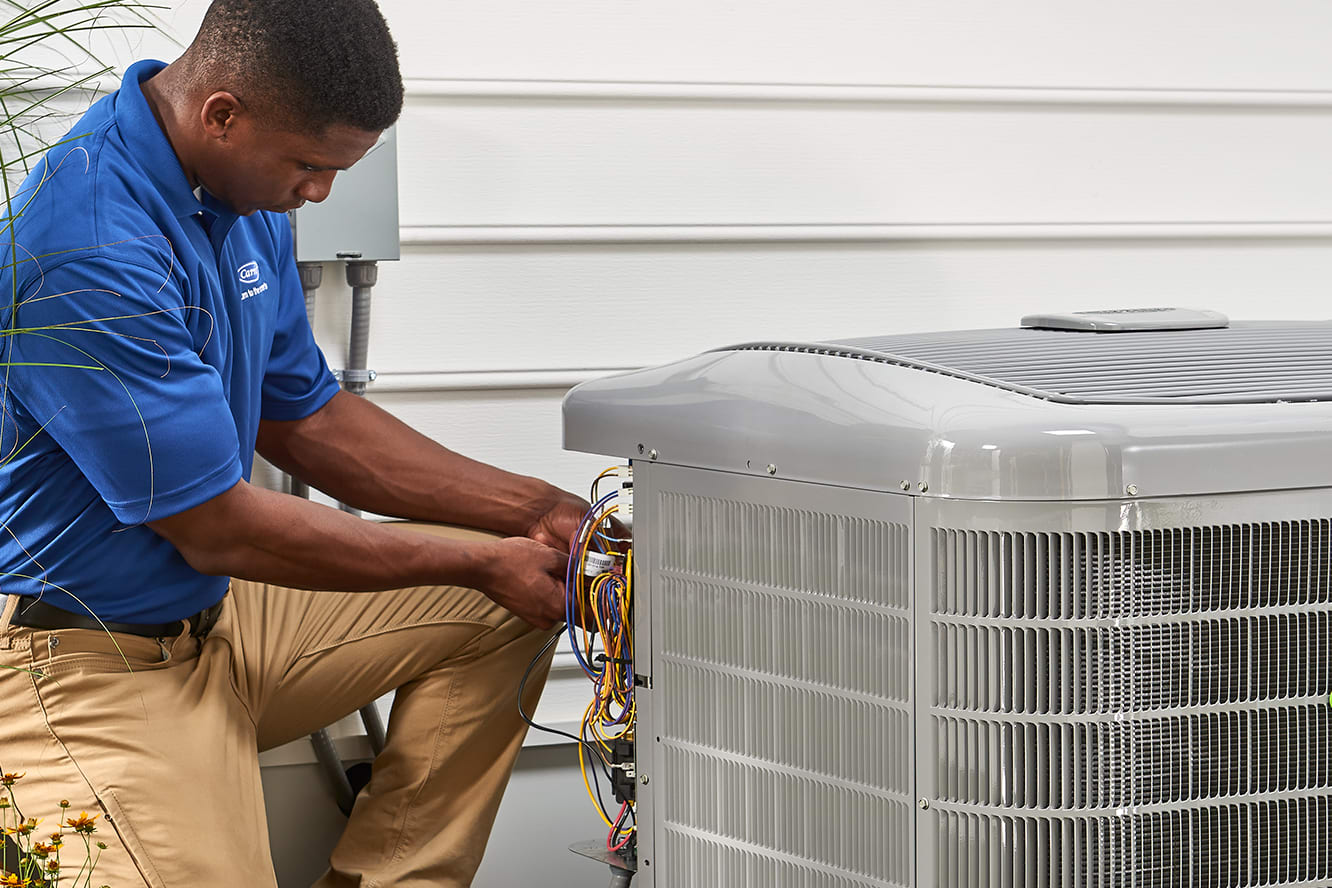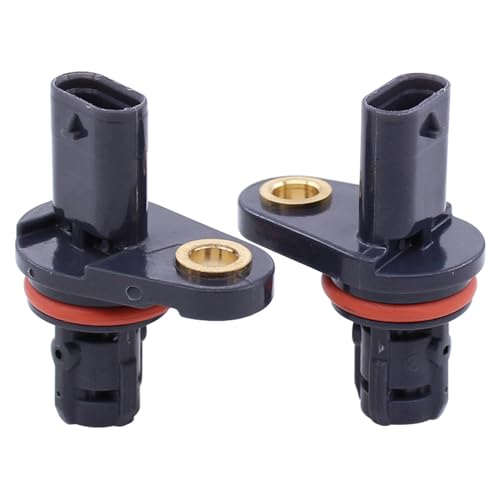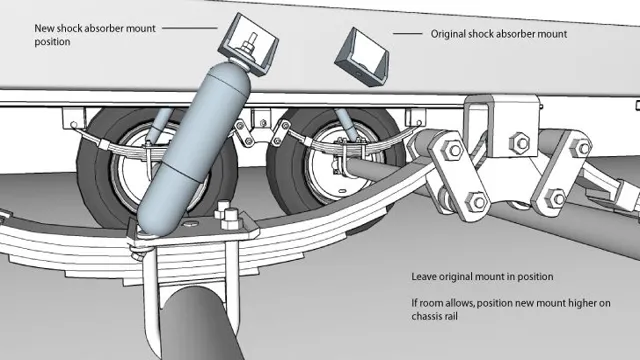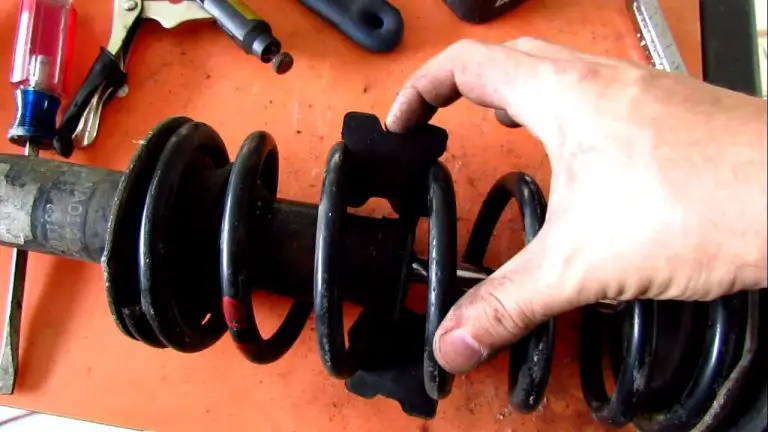Rv Air Conditioner Not Blowing Air: Troubleshooting Tips
If your RV air conditioner is not blowing air, it may be due to a fan-related issue, such as a faulty fan capacitor that needs to be replaced. Check the filters and coils for dirt and debris that may be obstructing airflow, and clean or replace them if necessary.
Running the air conditioner with just the fan can help melt off any ice accumulation that may be blocking airflow. If the problem persists, it may be a sign of low refrigerant levels. Clean the air filters, coils, and remove any obstructions like dry leaves or spiderwebs to ensure optimal performance.
Consider replacing any parts that are excessively dirty or worn.
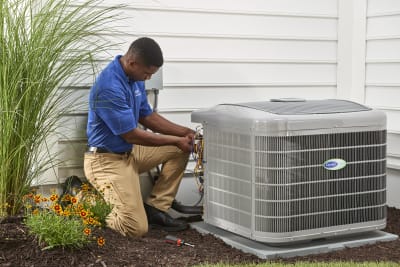
Credit: www.carrier.com
Common Rv Air Conditioner Issues
Having a comfortable temperature inside your RV is crucial, especially during hot summer days. However, you may encounter issues with your RV air conditioner not blowing air, which can leave you feeling hot and frustrated. In this section, we will explore some common problems that can cause your RV air conditioner to stop blowing air and provide solutions to help you get back to enjoying a cool and comfortable trip.
Fan-related Problems
One common reason for your RV air conditioner not blowing air is fan-related issues. The fan capacitor plays a crucial role in running the fan, and if it stops working, the fan won’t operate. To check if this is the problem, you can visually inspect the fan by accessing the unit’s interior or referring to the manufacturer’s instructions.
If you find that the fan capacitor is faulty, it needs to be replaced. Before attempting any repairs, be sure to turn off the power supply to the unit for safety reasons. Once the faulty fan capacitor is replaced, you should notice a significant improvement in the airflow.
Low Air Flow Solutions
If you can hear the unit running but feel little to no airflow from the vents, low air flow might be the culprit. One possible cause is dirty filters and coils that hamper proper airflow. It is essential to regularly clean and maintain these components to ensure optimal performance.
To clean the filters, remove them according to the manufacturer’s instructions and wash them with mild soap and water. Allow them to dry completely before reinstallation. Cleaning the coils may require a specialized coil cleaner or a gentle brush to remove any debris or dirt buildup.
Another solution is to run the air conditioner with just the fan to allow any ice accumulation to melt off. If the air conditioner still doesn’t blow cold air even after cleaning the filters and coils, it’s advisable to have the refrigerant levels checked by a professional. Low refrigerant levels can lead to insufficient cooling and reduced air flow.
Refrigerant Level Check
In some cases, the air conditioner may not blow cold air due to low refrigerant levels. To check the refrigerant levels, it is best to consult with an HVAC technician who has the necessary tools and expertise to diagnose and resolve the issue.
A professional technician will be able to determine if the refrigerant needs to be replenished or if there is a leak in the system that needs to be repaired. It’s important not to attempt to handle refrigerant issues yourself, as it can be dangerous and requires specialized knowledge.
By addressing these common RV air conditioner issues related to fan problems, low air flow, and refrigerant levels, you can ensure that your air conditioner continues to blow cool and refreshing air during your travels. Regular maintenance and prompt repairs are key to enjoying a comfortable and stress-free RV experience.
Diy Troubleshooting Tips
Having trouble with your RV air conditioner not blowing air? Try checking for any obstructions in the fan, clean filters and coils, or test and replace the fan capacitor to fix the issue efficiently. DIY troubleshooting tips can save you time and money on professional repairs for your RV’s air conditioning system.
DIY Troubleshooting Tips Having your RV air conditioner fail to blow air can be frustrating, especially during hot summer days. But before you reach out to a professional for help, there are a few things you can do to troubleshoot the issue yourself. In this section, we’ll walk you through three common DIY troubleshooting tips to help you get your RV air conditioner back up and running. Let’s start with inspecting and cleaning filters and coils.Inspecting And Cleaning Filters And Coils
One of the most common reasons for an RV air conditioner not blowing air is dirty filters and coils. Over time, dust, debris, and other contaminants can accumulate and block the airflow, causing the unit to work inefficiently or not work at all. Here’s a step-by-step guide to inspecting and cleaning your filters and coils:- Turn off the RV air conditioner and disconnect it from the power source.
- Locate the air intake grille on your air conditioner unit. This is usually located on the ceiling or wall of your RV.
- Remove the filter by either sliding it out or unscrewing the cover.
- Inspect the filter for dirt, dust, and debris. If it’s dirty, clean it gently using a soft brush or vacuum cleaner.
- Next, locate the evaporator and condenser coils. These are usually behind the filter.
- Carefully clean the coils using a coil cleaner or a mixture of warm water and mild detergent. Be sure to follow the manufacturer’s instructions.
- Allow the coils to dry completely before reinstalling the filter.
- Once the filter is clean and the coils are dry, reinsert the filter and secure it in place.
Checking Fan Capacitors
Another reason why your RV air conditioner may not be blowing air is a faulty fan capacitor. The fan capacitor is responsible for starting the fan motor and maintaining its speed. If the capacitor is defective or damaged, the fan may not start or run at the proper speed. Here’s how you can check your fan capacitors:- Turn off the RV air conditioner and disconnect it from the power source.
- Locate the capacitor(s) near the fan motor. They are typically cylindrical in shape and have two or three terminals.
- Using a multimeter set to capacitance mode, check the capacitance value of each capacitor. Refer to the manufacturer’s specifications for the correct range.
- If the capacitance values are significantly lower than the manufacturer’s specifications, the capacitor is likely faulty and needs to be replaced.
- Disconnect the wires connected to the faulty capacitor and remove it from the RV air conditioner.
- Install the new capacitor by connecting the wires to the correct terminals.
Resetting The Rv Air Conditioner
If inspecting and cleaning the filters and coils, as well as checking the fan capacitors, did not resolve the issue, you may need to reset the RV air conditioner. Resetting the air conditioner can help resolve minor glitches and restore the unit to its factory settings. Here’s how you can reset an RV air conditioner:- Turn off the RV air conditioner and disconnect it from the power source.
- Locate the circuit breaker panel in your RV.
- Identify the circuit breaker that controls the air conditioner and switch it off.
- Wait for a few minutes, then switch the circuit breaker back on.
- Reconnect the RV air conditioner to the power source and turn it on.
Preventive Maintenance
Proper preventive maintenance is crucial to ensure that your RV air conditioner functions efficiently and effectively. By following a routine maintenance schedule, you can prevent issues such as the air conditioner not blowing air. Here are some essential preventive maintenance tasks to keep your RV air conditioner in top condition:
Regular Cleaning Of Filters And Coils
- Inspect and clean the air filters regularly to ensure optimal airflow.
- Clean the coils to remove dust and debris that can hinder airflow and cooling performance.
- Regular cleaning helps prevent blockages and ensures proper air circulation.
Removing Debris From The Unit
- Check for any debris such as leaves or twigs around the exterior unit and remove them to prevent airflow obstruction.
- Clear any obstructions that may impede the fan’s operation and airflow.
- Keep the surrounding area clean and free from debris to maintain proper air intake and exhaust.
Replacing Worn-out Parts
- Inspect the unit for any worn-out or damaged parts that may affect its performance.
- Replace faulty components such as capacitors or fan blades to ensure smooth operation.
- Regularly monitor the condition of components and replace them as needed to prevent breakdowns.
Professional Assistance
Located in Austin, Texas, our professional assistance can help address the issue of your RV air conditioner not blowing air. Our experts can troubleshoot and fix the problem quickly and efficiently, ensuring you stay cool during your travels.
When To Seek Expert Help
If your RV air conditioner is not blowing air, there are some situations where seeking professional help becomes a necessity. When you are unable to rectify the issue on your own after trying the basic troubleshooting methods, it is time to seek assistance from a professional. Moreover, if the issue seems to be related to complex electrical or mechanical faults, it is crucial to consult an expert technician to ensure a safe and effective repair. —Importance Of Regular Servicing
Regular servicing of your RV air conditioner is vital to prevent unexpected issues such as lack of airflow. Professional maintenance can help identify and resolve potential problems before they escalate, ensuring that your air conditioner functions optimally. Additionally, regular servicing can extend the lifespan of your RV air conditioner, saving you from costly repairs and replacements in the long run.User Experiences And Recommendations
When it comes to experiencing issues with the RV air conditioner not blowing air, it can be quite frustrating. Real-life examples of troubleshooting and tips from experienced RV owners can provide valuable insights for those dealing with similar problems. Here are some user experiences and recommendations to help you understand, diagnose, and resolve RV air conditioning issues.
Real-life Examples Of Troubleshooting
Several RV owners have shared their experiences and practical solutions for troubleshooting air conditioner problems. For instance, videos on YouTube such as “RV Air Conditioner Won’t Come On, It Only Hums” by Hillbilly RV and “How to Fix Low Air Flow Problem in your RV Air Conditioner” by Garibay Gang offer step-by-step demonstrations of troubleshooting common issues like fan inspection, shroud removal, and capacitor replacement. These real-life examples provide valuable visual guidance for RV owners facing similar air conditioner challenges.
Tips For Rv Owners To Maintain Air Conditioner Efficiency
- Regularly clean the filters and coils to prevent dirt and debris from impeding airflow.
- Inspect the fan and compressor to ensure they are functioning properly.
- Check the fan capacitor and consider replacing it if necessary.
- When the AC is running but not blowing cold air, try running the air conditioner with just the fan to allow the ice accumulation to melt off.
Additionally, for those facing issues with a Dometic RV air conditioner not blowing cold air, resetting the unit may provide a quick solution. Videos like “Fixed: Dometic RV AC not blowing cold air – try before…” by RV Time share practical tips for troubleshooting specific air conditioning models. By following these recommendations and utilizing the expertise shared by experienced RV owners, you can improve the efficiency and performance of your RV air conditioner.

Credit: m.youtube.com

Credit: m.youtube.com
Frequently Asked Questions For Rv Air Conditioner Not Blowing Air
Why Is My Ac Running But Not Blowing Out Air?
If your AC is running but not blowing out air, it is likely due to a fan-related issue. Check the fan capacitor as it may have stopped running and needs to be replaced. Clean the filters and coils to ensure proper airflow and check the refrigerant levels if the AC still doesn’t blow cold air.
How Do You Reset An Rv Air Conditioner?
To reset an RV air conditioner, turn off the unit and disconnect power for a few minutes. Restart and adjust settings.
What Is The Likely Cause Of An Air Conditioner That Is Not Blowing Cold Air?
The likely cause of an air conditioner not blowing cold air could be dirty filters and coils impeding airflow. Cleaning these and running the AC with just the fan can help. If the issue persists, it may be due to low refrigerant levels.
Regular maintenance is essential.
Why Did The Ac In My Camper Stop Working?
The AC in your camper might stop working due to a dirty filter or low refrigerant levels, which can impede airflow. Check the filters and coils for dirt and debris and make sure that the refrigerant levels are adequate. If the issue persists, seek professional assistance.
Conclusion
If your RV air conditioner is not blowing air, try cleaning filters and coils. Check for debris blocking airflow and ensure fan capacitor is working. DIY fixes can save time and money. Regular maintenance is key to keeping your RV air conditioner running efficiently.

